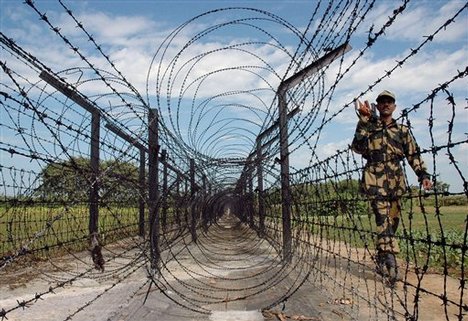
Dhaka, December 3: Living up to the promise made by Prime Minister Manmohan Singh to remove trade and non-tariff barriers between India and Bangladesh, India has decided to adopt a liberal visa policy for various categories of Bangladesh nationals, as a pro-active step, to promote economic engagement, people-to-people contact, cultural ties and tourism between the two nations.
It was in October this year when both countries agreed during the Home Secretary level talks to hold exclusive meeting to work out procedures and modalities at the earliest. However, India has not waited for joint working group (JWG) to be set up to sort out the liberal visa regime issue and has gone ahead unilaterally to simplify visa procedures for senior citizens, students, businessmen, medical patients and to promote tourism. “There is no formal agreement between India and Bangladesh on the visa regime. As a step towards showing India’s commitment to joining hands with Dhaka in giving a boost to the economic prosperity of Bangladesh and its people, we have decided to adopt a liberal visa regime,’’ India’s Ambassador to Bangladesh, Pankaj Saran told journalists here at the start of the “India Show” organized by Ministry of Commerce and Industry and FICCI. India at present gives nearly 500,000 visas to Bangladesh nationals every year and with a new visa regime in place, this figure is likely to witness a massive hike.
India has already signed a liberal visa regime with its other neighbour – Pakistan — introducing for the first time group tourist and pilgrim visas, multi-city and multi entry visa for businessmen, visa on arrival for senior citizens and other categories. However, the visa regime with Pakistan is yet to be formally implemented in ground.
But in case of Bangladesh, Mr. Saran the India mission in Dhaka has decided to grant liberal visa permits to businessmen, artists and for tourism purposes. “Earlier, businessmen and other categories would get five days visa with single entry condition. This was making it very difficult for even those people who have been dealing with Indian corporate world for the last two to three decades. Now we are granting six month multi entry visa and even longer term visas to various categories including artists from Bangladesh that is going to make things smooth and easy,” he added.
India is also looking to capitalize on medical tourism concept and in view of its strong medical facilities seeking to tap a huge market of citizens of Bangladesh would want to visit the country to seek medical treatment. Then there is another category which seeks to visit India with tourism purpose in mind. Then there is another category which seeks to visit their near and dear ones in west Bengal and other parts of India.
Arvind Mehta, Joint Secretary in Commerce Ministry said his Ministry had been pushing for a liberal visa regime with not only Bangladesh with all the SAARC nations and be partners in their development. “It is a very encouraging development that Indian mission in Dhaka has paved the way for smoother and liberal exchange between the people and economic of the two nations. It will help in promoting Bangladesh as a major investment destination for Indian business houses,” he added.





Comments
Add new comment